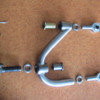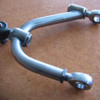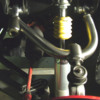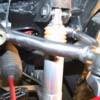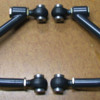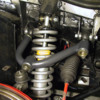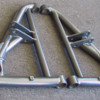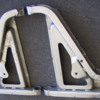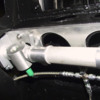Today has been a “Drop tools & work on Pantera day”.
So John & I set about creating some new top front suspension arms to cure the lack of Caster issue.
Nothing new really, plenty of people have made new top arms for the very same reason.
But like everything we do, we had to do it a bit different.
We used some of the parts off the shelf here at Edge for our buggy suspension.
Such as the ¾” UNF rod ends, (chunky) tube inserts & “quick turn” adjuster housings.
The “quick turn” housings are to facilitate adjustment without having to pull the suspension arm apart.
Simply back off the jam nut & turn the adjuster sleeve nut which jacks the rod end in & out.
These adjuster housings are used at the forward chassis mount & at the upright.
At the upright I have used a Ford tie rod end that has a ¾” UNF thread & a 7 degree tapered pin.
(I think they may be the tie rod end from some sort of Ford truck?)
I machined up some little tapered insert sleeves out of stainless steel to adapt the Pantera upright taper to the 7 degree Ford taper.
Because there is a limit to the Ford tie rod ends angle the adjuster housing on the arm is kicked at 7 degrees to allow the suspension to go into full droop without stressing the tapered pin.
Still need to machine some spacers for the ¾” rod ends to suit the chassis mounts reducing down to 12mm.
Ordered some “Seals-It” boots for the ¾” rod ends to keep out the dust & dirt.
I’m hoping for 6 to 7 degrees Caster as the connection point at the upright has been shifted rearward by 10mm, (on top of the existing 2 degrees it currently has).
By adjusting the forward mount in & out it will have a small amount of Caster adjustment, (before it binds up) & the capability at the same time winding in & out the upright mount to set Camber.
Total arm length can be adjuster using all three adjustment points if required.
I have bolted in place to test for wheel to body clearance due to the increased Caster & to check it clears the shock at full droop etc,
Tomorrow I plan to re-install with the correct spacers, remove the spring & cycle through its travel & check it functions correctly.
Regards,
Tony.
Attachments
Original Post


